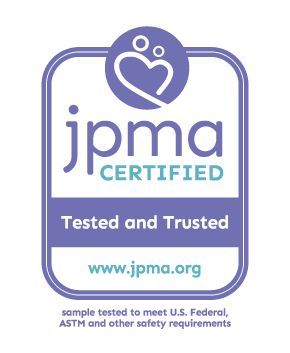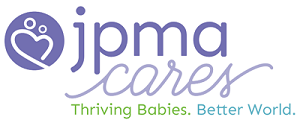Nursing Pillow Safety
Nursing pillows are designed to support comfortable feeding and bonding moments with your baby. While they can be helpful, it's essential to use them safely to reduce the risk of injury or harm. Follow these tips to ensure your baby stays safe:
Understand Safe Use
- Nursing pillows are for supervised use only.
- Use only while you are sitting and while your baby is awake.
- Do not place nursing pillow on an elevated surface unless for supporting your baby in your lap.
- Always keep a close eye on your baby when using a nursing pillow to ensure they remain in a position that prevents slouching or airway obstruction.
Never Leave Baby Unattended
- Babies should never be left alone on or with a nursing pillow, even for a moment.
- Never place a nursing pillow in a crib, bassinet, playpen, or anywhere baby sleeps, as this increases the risk of suffocation or entrapment.
For Feeding Only
- Nursing pillows are to be used only for feeding or nursing your baby. They are not designed for infant sleep, lounging, sitting, or propping.
- If your baby falls asleep during feeding or if you feel drowsy while feeding, transfer them to a safe sleep product—like a crib, bassinet, or play yard— immediately.
Age and Development Considerations
- Nursing pillows are recommended for newborns and infants who need extra support during feeding.
- As your baby grows and becomes more mobile, ensure the pillow continues to be a safe and practical tool for feeding.
Inspect and Maintain Your Pillow
- Regularly inspect your nursing pillow for signs of wear and tear. Replace it if the cover or filling becomes damaged.
- Follow the manufacturer’s cleaning and care instructions to prevent mold or bacteria growth.
Know When to Transition
- As your baby achieves greater head and neck control, you may transition away from using the nursing pillow.
- Adjust your feeding setup to align with your baby’s development and needs.
Instructions & Labels
Always follow manufacturer instructions, warning labels, and recommendations for age, height, and weight requirements. Product manuals are essential tools that provide critical safety information, including how to use the product correctly and when to discontinue use.
Safety Standards
Starting April 23, 2025, all nursing pillows manufactured in or imported to the United States must meet updated safety standards approved by the Consumer Product Safety Commission (CPSC). These new standards represent an important evolution in product safety, demonstrating the industry’s commitment to preventing injuries and protecting infants. By enhancing caregiver understanding of proper use and introducing structural adjustments to mitigate risks, these standards will help make nursing pillows safer for families.
Key updates to nursing pillow safety standards include:
- A firmer structure, similar to the firmness of crib mattresses.
- Larger openings and shorter arms to prevent accidental propping.
- Prohibition of buckles, straps, or harnesses that secure an infant to the pillow (though belts and buckles securing the pillow to the caregiver are allowed).
- Inclusion of a registration card for safety updates and clear instructions for proper use.
- Permanent safety warnings on the pillow and any included slipcovers to alert caregivers about proper use and risks.
- Restrictions on marketing, ensuring nursing pillows are promoted exclusively as feeding aids, not as multi-use products.
Manufacturers must also meet broader safety criteria, including tests for small parts and chemical safety. Nursing pillows manufactured or imported before April 23, 2025, can still be sold after the effective date, but some brands are already aligning their products with the new safety standards.
While the rules won’t take effect until April 2025, some brands are already updating their products to align with these safety measures. In the meantime, parents can keep using existing nursing pillow, as long as they are using them properly.
JPMA Certification
As the voice of the industry on quality and safety for baby and children’s products, the Juvenile Products Manufacturers Association (JPMA) helps families choose and use the best baby products with confidence.
The JPMA Certification Seal on your product or packaging signifies that it has been tested to meet all federal and state regulations, voluntary ASTM standards, and major retailer requirements at an independent, CPSC-accredited laboratory. JPMA Certified products undergo annual testing and reassessment after any material changes to ensure they meet the highest safety requirements.
With the new safety standard for nursing pillows, JPMA will soon add nursing pillows to the program. Families will soon be able to identify at a glance which nursing pillows meet these updated standards by looking for the JPMA Certification Seal.

















